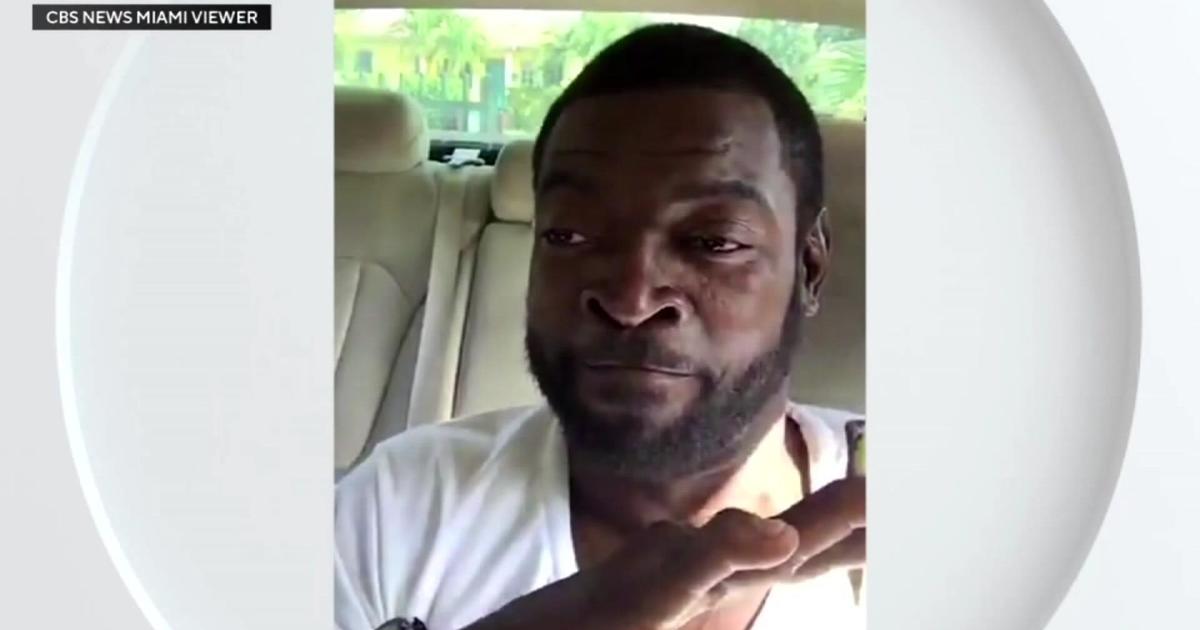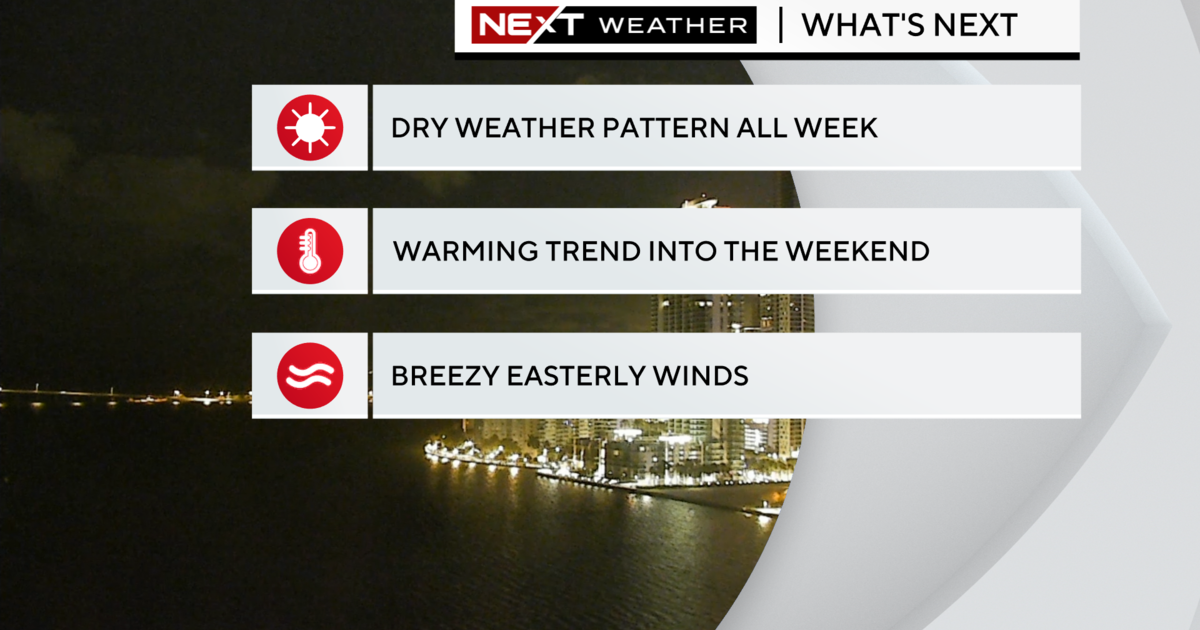Exclusive: Victims Recall Being Shot By Cops On SoBe, Still Don't Know Why
MIAMI BEACH (CBS4) --It was May 30th, 2011. Memorial Day. At 4 a.m. a crowd remained along famed Collins Avenue on Miami Beach, the last day of an Urban Beach weekend that brought hundreds of thousands of visitors to town.
A small car drove South on Collins, in the wrong lane. It swerved, side-swiping some other vehicles along the way. As the car approached 14th street, police officers opened fire.
More than a hundred rounds later the drunk driver of the car, hit 16 times, was dead.
Four innocent bystanders were wounded by shots fired by eight Miami Beach police officers and four borrowed from Hialeah.
An autopsy showed Raymond Herisse, the 22-year-old driver of the car had a blood alcohol level twice the legal limit.
More than two years later, Cedrick Perkins, a former house painter from Tallahassee, stood on the sidewalk in front of the hotel where he sat with friends when the gunfire erupted, where he was shot.
"I was sitting right in this area here," Perkins said, pointing to a brightly colored red and white table and chairs on the front porch of the hotel.
"I seen gunshots and people running," Perkins said.
"I got up and I tried to make it to the inside of the Delores Hotel. When I got in, I touched myself, and realized I was shot."
He had taken a slug to the chest. Blood gushed from the wound. One of Perkins friends and a hotel desk clerk called 911. They told Perkins to try to stay still while waiting for rescue.
"Is this the end? That's what I was asking myself," Perkins recalled. "I thought I was going to die."
Perkins, a father of two, is now disabled, unable to raise his left arm above his shoulder, unable to work as a painter.
The bullet that pierced his chest, passing close to his heart, remains lodged where it stopped after ripping through his rib cage.
"My doctor said it would cause more harm to get it out than to just leave it in," Perkins said. He said the shooting has changed his life. He no longer goes shirtless, even around his house. He doesn't want his young daughters to be scarred by his scar.
Perkins said he can't believe the officers opened fire on a crowded street.
"They put other people's lives in danger," He said. "I hope it never happens again."
Also on Collins Avenue when the fusillade erupted, Crystal Rivera, a nursing home worker from New York. She was hit in the arm, and has been unable to return to work. Her arm sports a one word tattoo: "Love."
Sarah Garcia was a patient advocate from Naples. She was shot through her left leg, a round leaving an ugly entry wound on one side, an exit wound on the other. Her most serious injury came from the shot that hit her left arm, shattering the arm and her elbow. Surgeons reconstructed it using metal screws and bolts and rods.
The elbow remains visibly disfigured. Garcia remained in a wheel chair for four months. A wife - and expectant mother - Garcia suffered the equivalent of a nervous breakdown and was hospitalized earlier this year. She suffers post traumatic stress disorder, PTSD.
"That's something that soldiers would get in war, when they've been involved in a firefight," said Garcia's attorney, Bradley Winston.
Carlton Saint Louis was on Collins Avenue with three friends when the shooting erupted. The Broward College student had come down from Pompano Beach.
"All of a sudden, it sounded like firecrackers," Saint Louis said. "People were screaming and running and my first instinct was to run, as well. I was running, and that's when I fell. I knew something was wrong."
Saint Louis found himself crawling with one leg, pulling himself along the sidewalk with his arms. His left leg and hip had been struck by a police round that shattered his femur and lower pelvis. He didn't realize he had been shot.
"As I'm still crawling, there's still gunshots in the background," he recalled. "My heart's racing, I don't know what's going on, I can't get up. Obviously in that situation, you're going to be very terrified."
"I was afraid I was going to die," he said.
While he didn't die, Saint Louis's life became a living hell. He was unable to walk for seven months after the shooting. He had surgery that put his hip and leg back together with titanium plates and rods and screws.
"I still have pain in my leg," he said. "Mornings, I wake up, and I'm stiff."
The bright college student, who aspires to be a physical therapist, was once an active boxer, football player, bicyclist and runner. He will never run or ride a bike again.
"The last time I ran was that night," Saint Louis said, recalling being shot and not understanding why he couldn't get up. "That was the last time I ever ran."
While more than two years have passed since the shooting, the victims still don't know why police crowded around Raymond Herisse's car firing volley after volley of bullets at it and into the crowd.
Early on police said Herisse struck or attempted to strike an officer with his car. That officer has never been identified.
Police also suggested Herisse had pointed a gun or even fired at them.
A police lab report obtained by CBS4 News, however, showed tests on Herisse's hands and body were negative for gun powder residue. He had not fired a weapon that night. Days after the incident a gun was found in the car. CBS4's news partner, The Miami Herald, reported the gun was wrapped in a towel beneath a seat in the car.
Citing an on-going investigation, Miami Beach police have refused to discuss the shooting. None of the twelve officers who pulled their triggers has given a statement or been interviewed by investigators. They don't have to, as long as the criminal investigation remains open.
All but one of the officers remains on the job. Officer Derick Kulian was fired by the department after an allegedly drunken, on-duty incident where he crashed a bachelorette party on Ocean Drive, took the bride-to-be for a ride on his department-issued ATV, and ran over and seriously injured a couple on the beach. Kulian's attorney has said investigators made the officer submit to a flawed alcohol test.
"How long is this investigation going to go on?" said E. Leslie Stiers, the attorney representing Carlson Saint Louis. "How long can they delay justice for my client and the other victims of this shooting by hiding behind this active and on-going investigation privilege?"
Attorneys representing the victims filed a lawsuit earlier this year in an effort to force Miami Beach to turn over evidence in the case - police radio tapes, crime scene photographs and other exhibits. The city dragged its feet to the point of infuriating the judge presiding over the case.
Judge Victoria Sigler was particularly perturbed that a city attorney told her in one hearing that her order to produce "visual recordings" didn't specify photographs.
"If somebody took a coloring book and colored some pictures of Mr. Herisse as he lay dead in the street, it is your obligation to turn them over. Now," the judge said, exasperated.
Sigler said Miami Beach attorneys had been "darn right insultful" to the court. She said she "was astounded" by their failure to fully comply with her order. The judge expressed obvious contempt for the behavior of the city's attorneys and ordered Miami Beach to pay fees for the victims' lawyers that could run into the tens of thousands of dollars.
Recently, attorneys for the victims got the materials that the judge ordered be handed over months ago. One major surprise: Police took no photographs of Raymond Herisse's body at the crime scene.
"I think their behavior from day one has been completely egregious," said Jasmine Rand, a lawyer representing victim Cedrick Perkins. In addition to suing the city, Rand says a federal case should be made of the cops' actions.
"We have asked the United States Department of Justice to come in and conduct an internal investigation into the Miami Beach police misconduct that started the first day," Rand said.
Attorneys for the dead and wounded promise not to quit.
"I'm not going away," said Marwan Porter, the lawyer for Herisse's family. "We're going to dot every 'I,' we're going to cross every 'T,' we're going to leave no stone unturned, we are not going to stop."
"There should be some type of answer, that's what I'd like, some type of answer to what happened that night," said victim Carlson Saint Louis. "What do you plan on doing to resolve the issue? That's what I would like, at the end of the day. Justice."
CBS4 News has learned that the lead investigator into the shooting for Miami Beach police concluded his probe in 2012. It was not until recently, however, that the case was forwarded to prosecutors, who may or may not decide to charge any of the officers.
The investigative file finally reached the office of State Attorney Katherine Fernandez Rundle on May 31st, two years and one day after five people were gunned down by police on Collins Avenue.



